How to do a plank
Perfect how to do a plank in order to improve your overall strength
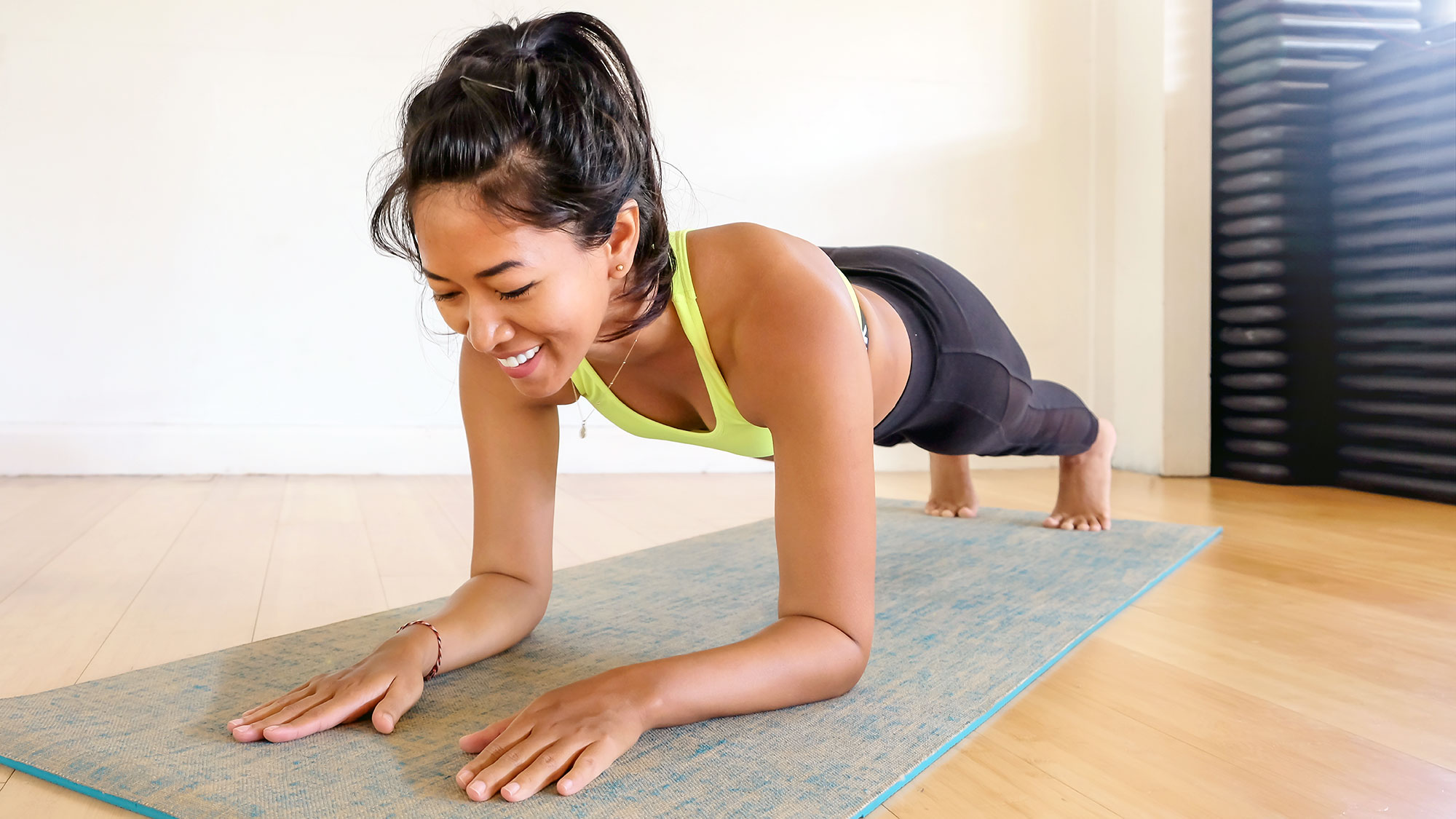

Becks Shepherd
Learn how to do a plank and challenge yourself to keep improving your stamina. Great for helping to improve your overall strength, a plank is an impressive move that can help to test your abs, arms, quads, core, and lower back all at the same time, making it a versatile skill that you can include to build your overall fitness.
The plank is a workout classic, gaining popularity and momentum due to the fact that it’s totally accessible; all you need to get started is yourself, and a soft place to lie flat. For that reason, you’ll find it in plenty of core workouts for beginners, and with this guide telling you all you need to know about great form, you’ll be able to improve your performance every time you try it, even if you’re just starting out.
To get started with this move, and to track your progress with a plank, the first thing you’ll need to do is learn the basic form. We’ll be covering all of that essential information here and you’ll feel the benefits with it comes to your posture and strengths if you can add a plank into your workouts regularly.
If mastering a plank is something you’ve wanted to tick off for a while, then get started with the tips below, as well as reading up on the mistakes to avoid on your journey. There’s also advice on how to avoid injury below too, so that your fitness routine isn’t hindered.
Why learning how to do a plank is great
Building a solid core is the foundation to every sporting endeavour. It will make you stronger, help reduce the chances of injury and boost your athletic performance, especially in sports such as running and cycling where a strong core can help improve posture and form.
It is also crucial if you spend all day sitting in a chair working on a computer to help keep your upper body upright and avoid slouching.
“Plank exercises are a great way to improve core strength and stability as they are a bodyweight exercise,” says Jeannine Desmier, co-founder of 1Sculpt Fitness.
Get the Fit&Well Newsletter
Start your week with achievable workout ideas, health tips and wellbeing advice in your inbox.
“Plank exercises also have a great impact on your posture, as they strengthen key postural muscles and can help reduce back pain. I’d recommend doing planks over crunches as they put less strain on your spine and hip flexors. More importantly, a strong core will increase your ability in every type of workout while also improving your day-to-day wellbeing.”
The plank is also highly effective in terms of efficiency. A 2016 randomized clinical trial that pitted a varied abdominal workout against a workout program consisting purely of planks over the course of thirty days found planking to be as good as a varied abdominal workout, with almost no difference between the two.
How to do a plank: basic form
You may think that planking simply involves lying on the floor resting on your elbows while you count down every painful second until one minute is up.
But there is a lot more to this exercise than that, and the closer you pay attention to the correct form, the more likely you are to see big benefits.
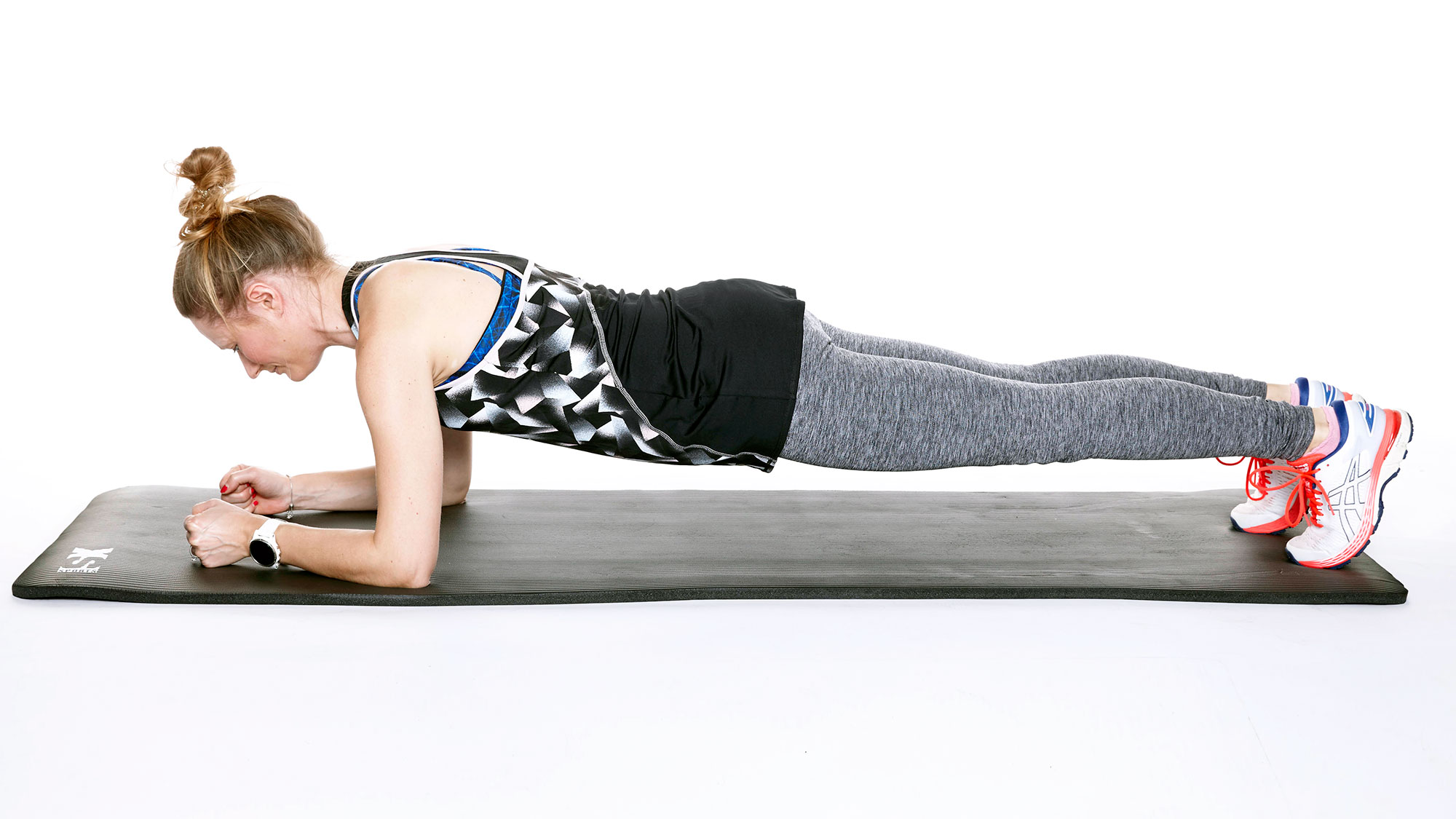
Follow our step-by-step guide on how to do a plank below:
- Lie on your front, resting on your elbows with your arms at 90 degrees.
- Your legs should be slightly apart – if you are new to planking, hip-distance apart will help with balance.
- Engage your core and breathe efficiently - this is super important. Without doing that, you have no support for your lower back, plus you won’t be working deep into your core, including the pelvic floor.
- Take a deep breath into the rib cage and, as you exhale, think of zipping up the core to the spine from the pubic bone right up to the rib cage.
- As you take your next inhalation try to keep some core activation and focus on the breath.
- Now think about your posture, reaching the crown of your head forward. Focus on keeping your body in a straight line from your head to your heels.
How long should I hold my plank?
How long you plank for - and how often - depends on your experience.
If you are a beginner with a weak core start with 10-20 secs x 5-10 reps, then increase by 10 seconds every day or every two days.
“The most important factor to remember is form and core engagement,” says Desmier. “There’s no point in holding a plank for a minute if your lower back is taking over and you’re not engaging the correct muscles. It should be quality over quantity every time. Practise, practise, practise.”
That was certainly the case for our writer who attempted to plank every day for a month - find out how she got on by following the link!
Meanwhile, you may be interested (or relieved!) to note that one Harvard University report suggests that planking for beyond two minutes has very little benefit even for experienced plankers.
Expert tips on how to do a plank
“The key to an effective plank is to envision pulling the front of your pelvic muscles up,” says Desmier. “The most common mistake is pulling in and holding your breath.”
A good drill to practise core engagement is to kneel in a box position, hands underneath shoulders and knees underneath hips, with knees hip-distance apart and weight distributed equally between upper and lower body.
“It’s crucial to consciously engage your core throughout,” Desmier adds. “You shouldn't feel your lower back working – instead, you should feel your core, shoulders, glutes, quads and adductors working together to keep your body in a straight line.”
A good tip to achieve this is to visualise the crown of your head pulling forwards and the soles of the feet extending to the opposite side of the room. “Another visual cue I like to use is trying to imagine balancing a cup of water on the back of the head and on the lower back, and your hip bones shining a light to the floor.”
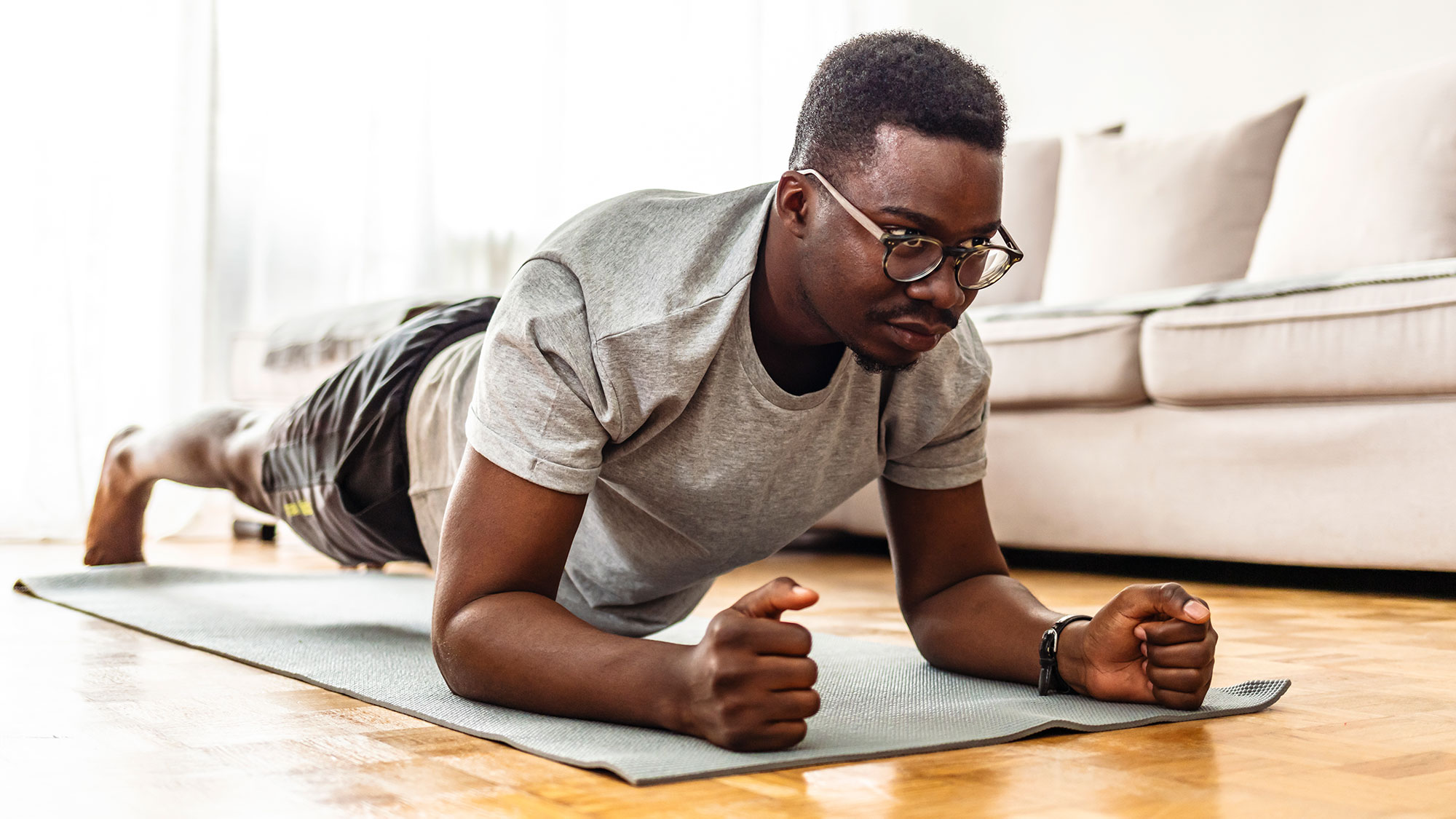
Whilst there's lots of focus on the core, it's also important not to neglect other areas of your body, particularly your glutes.
“Also remember that the glutes must be activated,” says Desmier. “If you are finding glute activation difficult, then practise some pelvic tilts. This will help to support your lower back. After that you can adapt your plank variations to challenge the core by adding dumbbells and even resistance bands. The key is to master the most basic plank and progress as you get stronger.”
Finally, with any luck you'll soon be planking for minutes on end, which is great for your core - but can be killer on your elbows and forearms. We recommend using an exercise mat for comfort.
Common plank form mistakes to avoid
The most common postural fault in a plank is dropping the head or shortening the neck muscles by looking up.
Desmier says that you should aim to focus your eyeline long and low, keeping the front of the chest open and shoulders down the back and away from the ears.
Also, the key is to be mindful that your hip flexors are relaxed and your glutes are engaged. You want to focus on mind-body connection and muscle contraction.
“Another common mistake is arching your back and lowering the hips,” says Desmier. “This happens when the abdominals are not engaged. The other mistake that creeps in is rounding the upper back and also feeling the work in the shoulders rather than the abdominals – this is where muscle connection comes in. Master your form.”
How to do plank variations
Once you've mastered the basic plank, you can mix things up with these plank variations. Just remember that form is paramount!
“No matter which plank variation you do, make sure your posture is correct and you have your core engaged at all times,” says Desmier. “If you are unable to maintain form or engage your abdominals, keep your planks to short time-frames of 5-10 secs and build from there.”
High plank
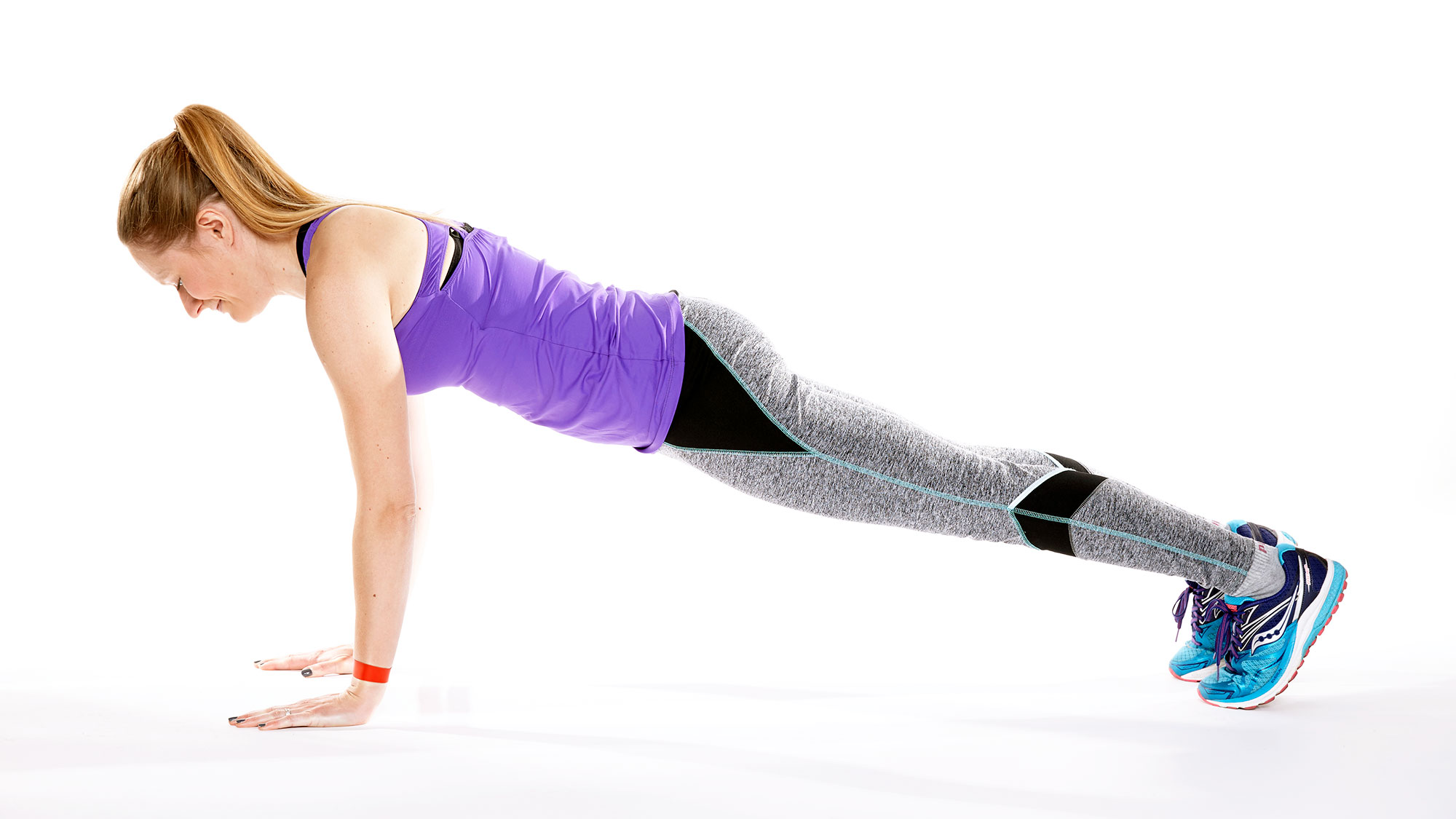
- Take up a push-up position, hands directly underneath the shoulders.
- Engage your core and glutes, creating a straight line from your head to your toes. Keep a neutral neck and spine.
- The exercise can be kept static or you can add leg extensions, reaching each foot alternately a couple of inches off the floor and then back down. This will work the core, back, shoulders, chest, glutes and legs.
- If you are new to planks this variation can also be done on your forearms which will be less work for the upper body and wrists.
Spider-Man plank (knee to elbow)
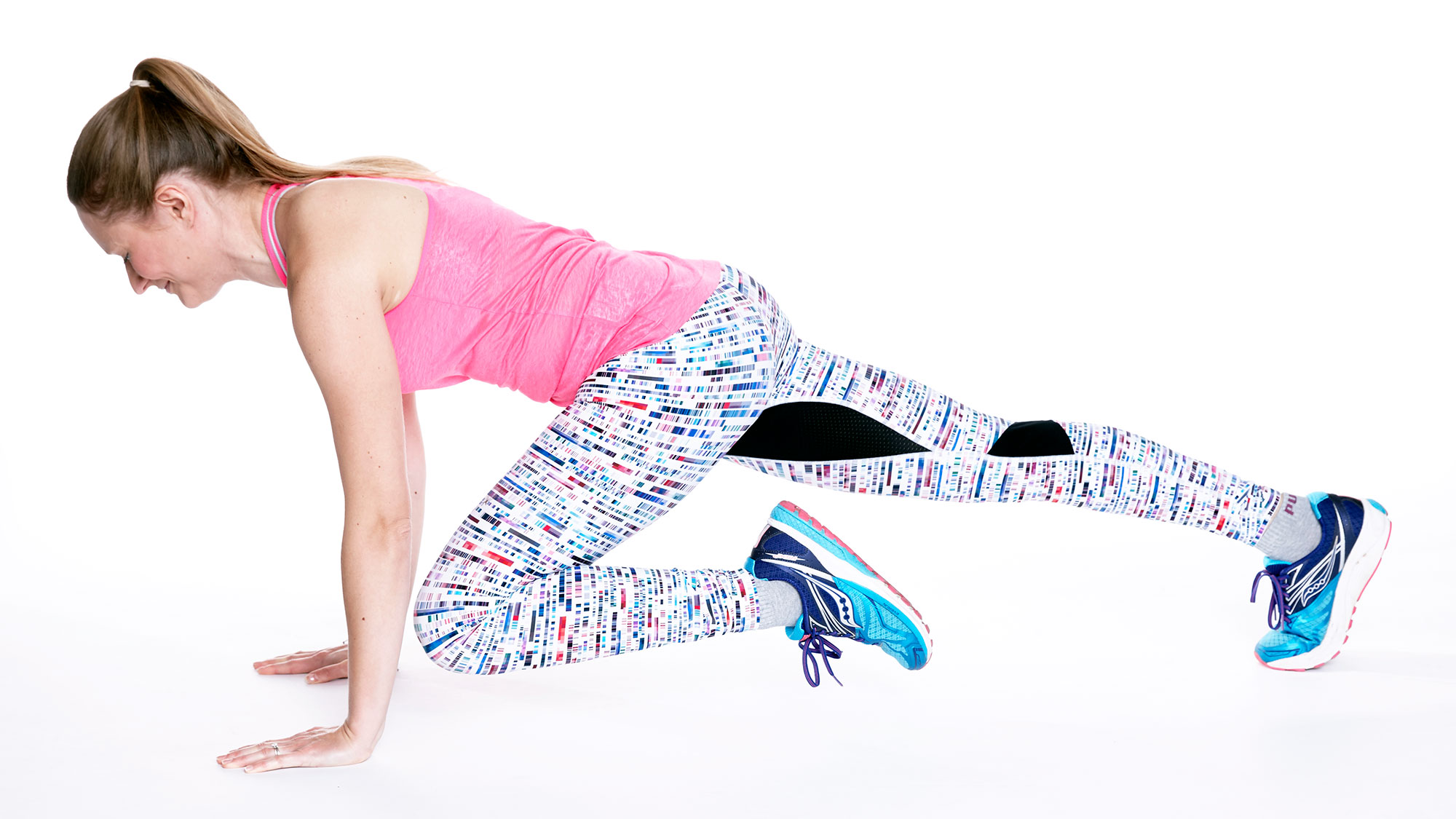
- Start in a high plank position (see above).
- Reach the knee to the outside of the elbow and then place it back to the plank position. Alternate each leg focusing on hip rotation as the knee reaches the elbow.
- Keep hips still and watch the back doesn't drop to the floor.
- Focus on shoulder stability and retraction, keeping the shoulders away from the ears and the lats engaged.
Ab roller plank
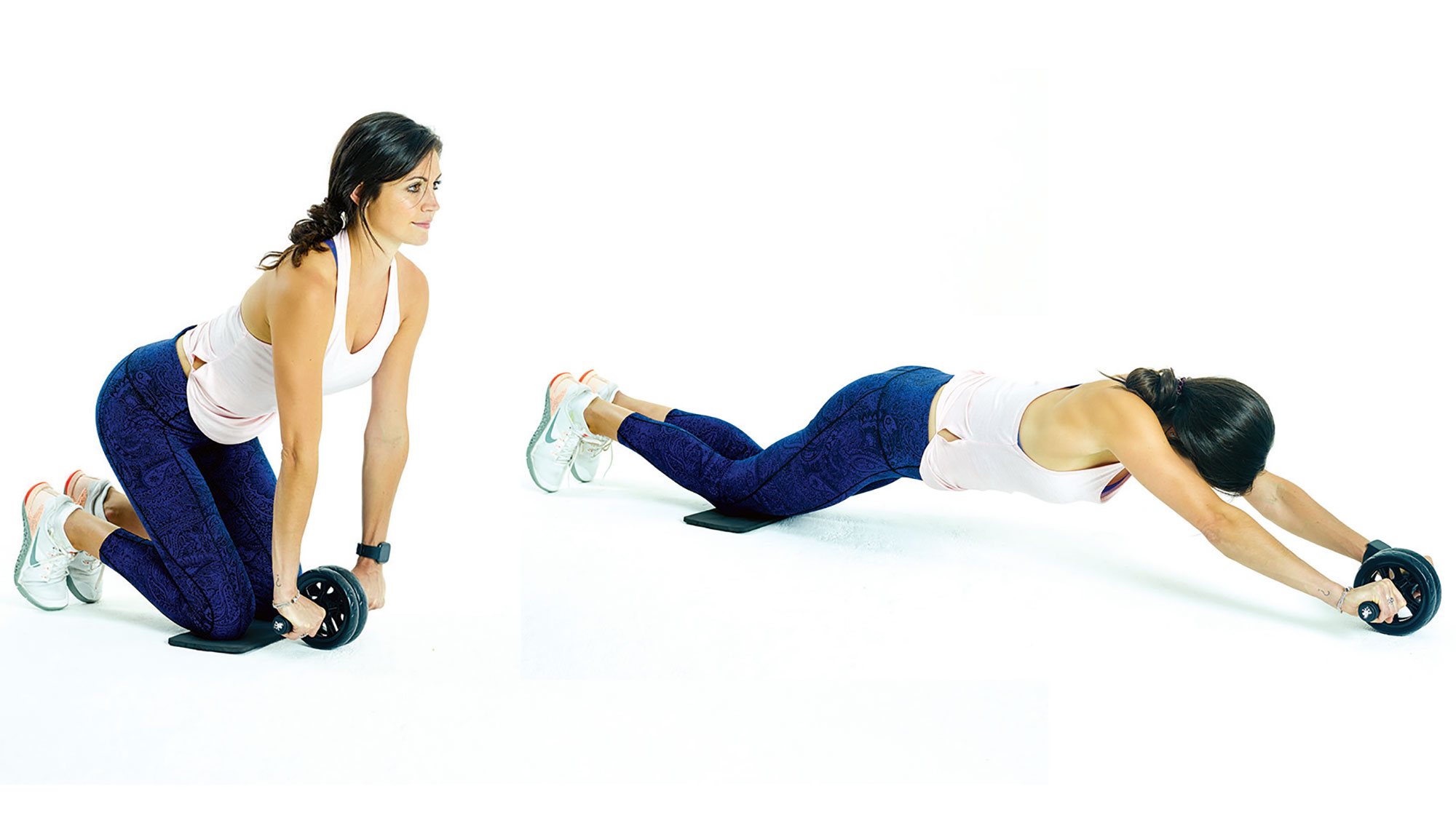
“A great way to challenge the abs is by adding the abs wheel,” says Desmier. “This is also a good way to progress from traditional planks – because the wheel is unstable, your core has to work harder.” Take a look at our pick of the best ab rollers if you don't already own one, and then give this killer move a try.
- Start in a kneeling plank position with wrists under shoulders and holding the wheel, and knees inside the width of the hips.
- Slowly drive the wheel away from you, keeping the core and glutes activated and shoulders away from the ears, then slowly draw the wheel back.
- Begin with a small range of movement and gradually increase. Then you can progress this movement from a high plank position and roll out.
Box plank
- Start on your hands and knees, on all fours. Hands are directly beneath your shoulders and knees directly beneath your hips.
- Tuck the top of your toes on the floor.
- Inhale then exhale as you push your knees away from the floor aiming to keep a flat back and glutes fired.
- Focus on reaching a box position with your hips in line with your shoulders.
- Keep the crown of your head extended forwards and arms soft through the elbows.
Plank hip dips
This is a good variation to add in once you have practised regular planks.
- From a plank position with your legs together, twist your body to the left, pivoting onto the side of your left foot and keeping both arms on the ground.
- Aim to nearly touch your left hip to the ground, then move back into the plank position, and pivot into a twist to the right-hand side.
- Aim for 2 sets of 10-12 reps.
Plank jacks
Underestimate these at your peril! Think of a jumping jack, and then transform it to lying face-down in a plank position and you have a plank jack.
- Start from a regular plank position, with your legs together, then jump both legs outwards as far as you can while keeping you upper body still.
- When you land them, jump them back in to the starting plank position.
- To decrease the intensity, switch to alternating legs going out to the side and back to center.
Howard is a freelance health and fitness journalist and copywriter. He has written for publications including ShortList, Runner’s World, Trail Running, Women’s Running, Red Bulletin, Wareable and Cycling Weekly. He enjoys nothing more than lacing up his trail shoes and heading out to explore new trails. He’s run ultramarathons everywhere from the French Alps and Canadian mountains to the Welsh coast and Peak District. When not running, he’s usually found hitting his local MTB singletrack trails or on a quest to find the country’s best cinnamon bun.